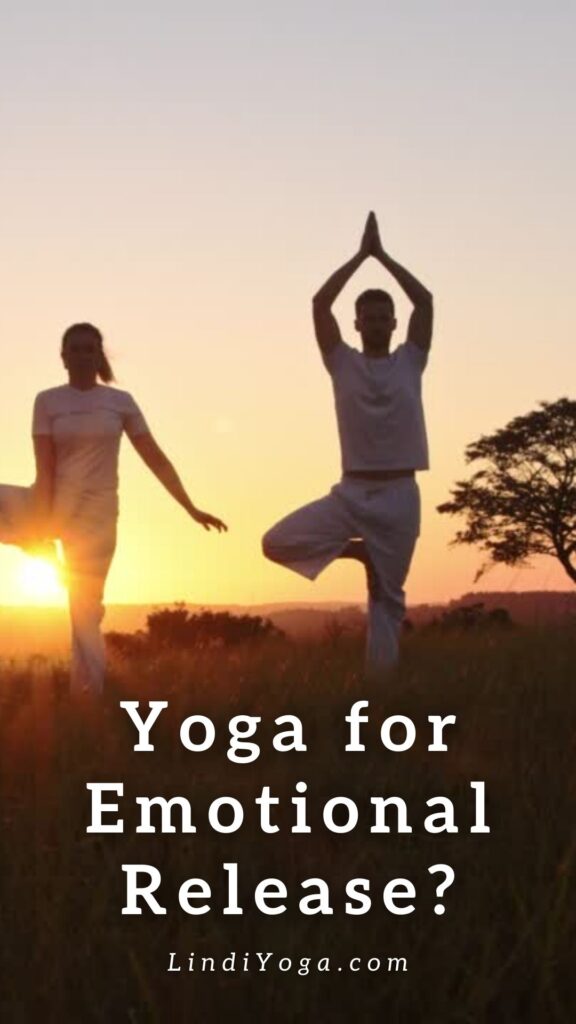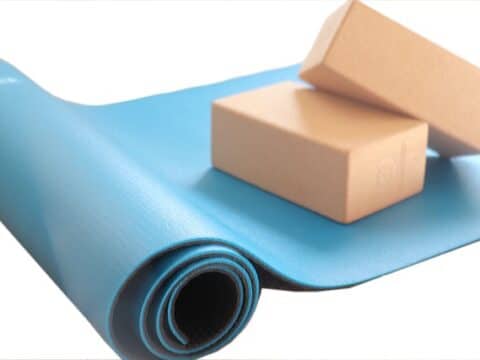Can you release emotions with yoga? Yoga practices are known to help people release emotional energy. While many people think of yoga as an exercise to calm the mind, this type of meditation is actually a powerful way to access the energy stored in your body.
Emotions are an essential part of our lives and without them we would not be able to make important decisions. According to neuroscientist Antonio Damasio, our ability to make decisions is influenced by our emotional state.
Podcast
Yoga is a great way to let go of emotions and open your heart. It can help you let go of tensions that can prevent you from moving forward.
In addition, you can learn to trust yourself and feel free. Yoga also helps you to let go of expectations. When practising, focus on being present in each moment and try not to fight your feelings.
Yoga poses affect the body physically and energetically, stimulating the meridian lines that correspond to the major organs.
Therefore, certain poses can cause strong emotional reactions in people.
During a yoga class you can let go of a wide range of emotions. This kind of letting go is beneficial for people of all levels, from beginners to experienced yogis.
However, you should be aware that this will not be the case every time. Therefore, be open to accepting the release as it comes.
8 yoga postures for emotional release
Half Boat (Ardha Navasana)
If you suffer from back pain, you should avoid this yoga pose. Fortunately, this pose is gentler than the standard boat pose. The benefits of this pose include strengthening your abdominal muscles and stabilising your lower back.
It combines well with other variations of the Boot Pose. If you suffer from back pain, try practising the Half Boat Pose with your back against a wall.
The half boat pose is a variation of the traditional boat pose. In it, you bend your knees and roll your body down a bit. Once you have assumed the Half Boat Pose, you are ready to move into the Full Boat Pose.
To hold this pose, keep your body balanced and breathe deeply. Make sure your spine does not touch the floor as this will round your spine. Your legs should be at an angle of thirty to 35 degrees from the floor. Hold this pose for about 15 to 20 seconds. If you find it difficult, you can use a yoga belt to keep your balance.
The seated twist (Parivritta Padaprasarana)
A powerful yoga stretch that relieves lower back and neck pain. The seated twist is a powerful yoga stretch that stretches the spine, upper back, lower back and hips. It also relieves pain in the lower back and neck.
This yoga pose can release emotions. To begin the pose, sit cross-legged on the mat. Place your right hand on the knee of the opposite leg. Also place your fingertips on the mat. Exhale as you rotate your body from the base of your spine to your head.
This forward bend stretches your hamstrings and lower back. It also opens your chest and shoulders and stretches your gluteal muscles. This pose is great for relieving back pain caused by sitting for long periods of time or lugging heavy luggage. It also stretches your hamstrings and hip flexors, relieves tension in your back and eases stiffness in your hips.
If you feel uncomfortable in this pose, don’t react by crying or swearing. Try to remain calm and concentrate on your breathing. In time you will find inner peace. You will need more time than you think to reach this state of relaxation.
Seated Forward Bend (Pashchimottanasana)
The seated forward bend is a Hatha yoga posture. This pose is also known as Pashchimottanasana or intense stretching of the back. This pose trains the torso and is good for the hips, but can also be used as a modern exercise. To practice this yoga pose, you must first have a good understanding of the seated position.
The seated forward bend has many benefits, including improving the digestive system and relieving menstrual cramps. It also improves the mobility of the legs, hips and lower back.
It can benefit people with disabilities or back injuries. For beginners, this yoga pose is the perfect way to warm up before starting the practice.
The seated forward bend requires a lot of physical effort, but is extremely beneficial for your health. It strengthens the posterior thigh muscles, improves the mobility of the hip joints and tones the abdominal organs. It also helps relieve pressure in the spine and strengthens the nervous system.
This posture also helps you to relax and improve your concentration. It exercises the legs and arms as well as the abdominal cavity and the back. It is important to breathe evenly and rhythmically when doing this posture so that your body does not become overworked or tense. If you do this pose regularly, you can stay relaxed and concentrate better.
Yoga Pose Dragonfly (Konasana)
The yoga pose dragonfly is ideal for strengthening the arms and legs and is one of the best poses for beginners. It requires a wide range of flexibility, especially in the hips and hamstrings. It is best performed with plenty of time and adequate stretching. If you do not have enough flexibility, you can fall forward.
To begin, lower your legs to the floor and then bend them with your knees fully bent. Bend forward and bring your arms between your thighs.
Keep your head lowered and smile as you perform this challenging yoga pose. Don’t forget to take a few deep, slow breaths. You should be able to stay in this pose for three to five breaths.
The yoga pose dragonfly is a good example of a yin yoga pose. It trains the adductors, hamstrings and back. It is suitable for all levels of experience. Some people find it difficult to lean forward in dragonfly pose, while others may be more flexible.
Dragonfly pose is a very challenging yoga pose and requires patience and can release emotions. You should not attempt it if you do not know your body well. This pose is also great for strengthening the arms, chest, shoulders and upper back. The pose is best performed when your body is warm. So make sure to warm up thoroughly before you begin.
Butterfly in Supine (Supta Baddha Konasana)
If you are pregnant and want to get the most out of this yoga pose, you should practice it on a cushion or against a wall. Your hips and pelvis are more flexible during pregnancy because the hormone relaxin is released. The only thing to note is that you should not try to stretch to the extreme if you are pregnant or breastfeeding. And be sure to ask your doctor if this yoga pose is suitable for you!
When practising at home, you can use a bolster to correct the arch of your lower back and a neck roll to support your body. This will help you relax and concentrate better. You should also make sure that you practice with a clear head and without distractions.
To assume the position, place your feet hip-width apart. You can use your hands on the outside of your thighs to raise your legs to the starting position. For a more challenging version, place your palms together on the floor to make it easier to keep your balance.
If you do the butterfly pose correctly, you can stretch your hips, groin and inner thighs. It also helps your digestive system and lowers your heart rate. It is also suitable for people who suffer from stress and fatigue. You can do this pose with a cushion under your chest and knees for support. The pose can be held for five to ten breaths.
Constructive rest to calm the emotions
Constructive rest is an important pose that supports the whole body. It rebalances the nervous system and the subconscious mind and helps to let go of daily aches and pains.
First, lie on your back, bend your knees 90 degrees and place your feet about 12 to 16 inches from your buttocks. You can also use a folded or flat towel under your head to balance the weight.
While practising the constructive rest pose, focus on breathing naturally. This is the most effective way to relieve stress and tension. In addition, the calming effect of the pose can increase your productivity. You can practice this pose for five to twenty minutes, or as often as necessary.
If you are sitting, you can use a blanket to cushion your head or neck. The use of eye pads is also helpful. When transitioning out of the pose, be as gentle as possible to avoid injury.
Legs on the Wall (Viparita Karani)
You should practice this yoga pose only after consulting your doctor.
This yoga pose can also stimulate the digestive system. It improves blood circulation and helps reduce flatulence, constipation and indigestion.
To do this, place a pillow or block under your sacrum and stretch your legs. Breathe deeply into your lower abdomen in this posture. It helps stimulate the fascia of the intestines and releases tension in the lower abdomen and lower back.
The legs-against-the-wall pose is a great way to stimulate circulation and restore your energy levels. However, this pose is traditionally avoided by people with certain health conditions.
Corpse pose (Shavasana)
Savasana, also known as corpse pose, is a very important yoga pose. It helps the practitioner to relax at the end of a session. It is also the usual pose for Yoga Nidra meditation. In Restorative Yoga, this pose is integrated into the practice. It can help a yoga practitioner relax after a long day.
Find a comfortable position to begin with. Using bolsters and pillows will help you relax. Also use an eye pillow to cover your eyes. Then take a deep breath and observe the sensations. The more you relax, the more alive you may feel. The more you relax and let go, the easier it will be for you to adopt this posture.
Another way to relax is to use a yoga bolster. You can also put a folded blanket under your head, knees, heels and under each arm. You need to be very comfortable to achieve the right stretch. Once you are in the pose, be sure to breathe deeply and connect with the breathing process.
If you are not sure if you can stay in this posture, practice lying on your mat before class. Savasana is good for your abdominal muscles and back. At the beginning, remember to breathe deeply from your diaphragm, which is located in your lower abdomen. Then exhale five times. Once relaxed, lift your buttocks and legs off the floor.
Tips for working with emotions in yoga
When we feel uncomfortable, our body lets us know. In fact, every cell in our body knows when we are experiencing something that is out of balance.
We can work with our emotions by naming our experiences and taking responsibility for our reactions. We can also write down our feelings. Writing about our experiences in the third person is also an effective way to express our emotions.
While yoga teaches us to be calm, we also need to know when to let go of our emotions. Some people do this through singing or dancing, others use essential oils, hot baths or burning paper. Ultimately, it is up to us to find the right method for us. Remember that letting go of your emotions is healthy.
It is very important to remember that the person who hurt you was not the actual cause of your pain. Instead, it was a reaction to that pain.
Instead of holding on to that pain, we can talk about it without blaming anyone. Sometimes we even collaborate on our own pain. It is important to understand that the person who hurt us may not be aware of our own actions and intentions.
When practising yoga, there are some poses that are particularly useful for dealing with our emotions. One of these poses is the squat, which opens our hips and helps us develop flexibility.
If you feel pain or discomfort, you should stop and adopt another pose that is more comfortable. Also, teachers should always be patient, encourage students and offer modifications for all movements. And if you are unsure, ask your doctor.




